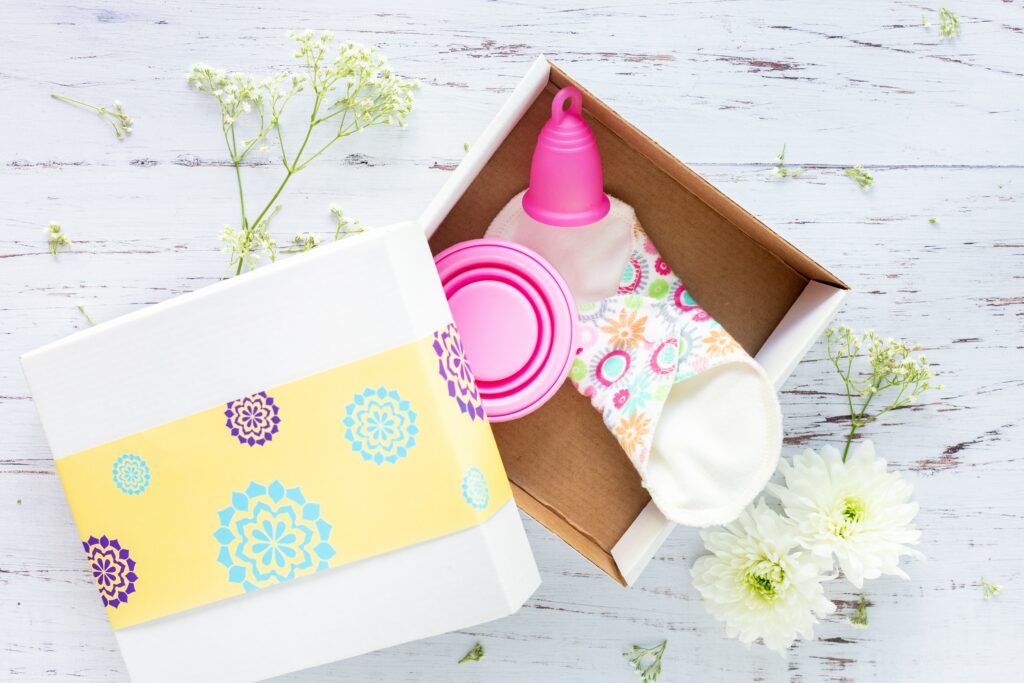What to know about cramping with menstrual cup? For the whole explanation of menstruation cups and cramps, continue reading. You’re undoubtedly curious about.

Are cramps caused by menstrual cups? Can using a menstrual cup help cramp? Menstrual cups and cramps are topics of many inquiries and misunderstandings. Some women wonder if their cramps and suffering are related to their periods or are brought on by the usage of period cups.
- Cramping: Is the Position of the Menstrual Cup to Blame?
- Cervix Position Alterations During the Cycle
- Too Big a Menstrual Cup = Period Cramps
- Cramps Associated with Stiff Menstrual Cups
- Cramping: Is the Body Adjusting to a Menstrual Cup?
Table of Contents
Cramping: Is the Position of the Menstrual Cup to Blame?
Some women are adamant that uncomfortable placement or using the wrong size menstrual cup causes their cramps. Here are a few of the most frequent explanations for why this could be the case.
Too Long Menstrual Cup
If your menstrual cup is excessively long and the stem extends out of the body, this might be one of the causes of your period pain. If you use one of the lengthier menstrual cups yet have a low cervix, this will undoubtedly be the case.
Additionally, a menstruation cup that is overly lengthy may push up against the cervix. It’s delicate, plainly uncomfortable, and if it’s pushed too much, it might cause cramping.
How to Measure Cervical Length
Before purchasing a menstrual cup, be sure your cervix is in the right place. Enter the vaginal canal with your index finger. Do you have access to your cervix?
If the answer is no, your vaginal canal is lengthy.
You have a cervix that is standard height if you can fit the tip of your finger within.
Perhaps you can reach out and touch it quite simply with a barely inserted finger? Your cervix is really low.
Cervix Position Alterations During the Cycle
Because your cervix might move around during your cycle, you can have cramping in response to a menstrual cup on one day but not on another. Or perhaps you get menstrual cramps during one period but not the next.
Sadly, there isn’t much you can do to solve this issue. But do keep a careful eye on this and a thorough notebook. There may be certain trends that you may identify. Maybe the first and third days of your period are the only ones during which you have pains when using a menstrual cup. Use this information to your advantage if it happens several times in a row. On the second day, use a tampon, and on both days, use a menstrual cup.
Too Big a Menstrual Cup = Period Cramps
My period cup is giving me pains! Some cups with a wide diameter can just be too huge to fit effectively into your vaginal canal if you’re tiny and haven’t given birth vaginally. These excessively large cups will press hard against the walls of your vaginal canal even if you can manage to implant them.
Wearing your menstrual cup in this situation will make you uncomfortable and irritate the region, which might result in cramps or pain. For this reason, we often advise smaller menstrual cups for women who haven’t given birth and larger menstrual cups for those who have. Perhaps age shouldn’t be a deciding factor when selecting a cup.
Cramps Associated with Stiff Menstrual Cups
If the period cup is overly stiff, that might also be another factor contributing to menstruation discomfort. Stiff cups can exert significant pressure on the walls of your vaginal canal, which may be uncomfortable for some people.
When using a device, you can discover that it takes a while to urinate since they can push fairly aggressively against your bladder. Is this a major issue? No, if it isn’t painful. However, some people may experience pain, in which case you should switch to a softer menstrual cup.
You could now believe that everyone should just get a gentler menstruation cup! Due to the difficulty of inserting these soft cups, this isn’t usually the ideal choice. This is due to the fact that you may need to twist them in order to insert them and prevent leaks; they don’t just pop open easily.
Cramping: Is the Body Adjusting to a Menstrual Cup?
Others believe that muscular spasms might result from menstruation cups since the body is adjusting to something new inside of it. Consider how it would be like for your body to employ a fresh set of muscles that it wouldn’t ordinarily utilize.
They won’t become stronger or adjust to anything the size of a menstrual cup inside of you right away. The first time you try to put one in, you might realise that they are pretty large.
If this is the case, remain wearing the cup as long as the cramps are not too severe since your body will gradually adjust. See whether your body adjusts to having anything like a menstrual cup inside after a period or two.
Most people discover that after a few cycles, cramps brought on by a menstrual cup go better rather than worse. I hope that this is also the case for you.
Similar Blog
Learn more about the human mind, discover yourself and remain motivated with Evolve! If you liked our article, try the Evolve App to help you move on and focus on your growth. Evolve has a range of guided audios that help you proactively manage stress, reduce anxiety and make mindfulness light and joyful, so you can be balanced at any time! The Evolve app is now live globally on Android and Apple. Click here to try it for free!
Co-founder and brains at LeapX by C32 Media Labs
Mail at sarah@c32.media to connect with her.